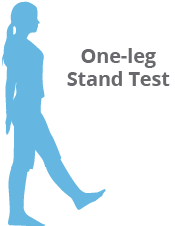One-Leg Stand Test
One of the three standardized field sobriety tests that can be administered during the course of a drunk-driving stop is the one-leg stand test. This test is used to determine if a driver has a blood alcohol content (BAC) level of .10% or greater—and if the officer determines that the driver is indeed over the legal limit, he or she has probable cause to make an arrest.
One-Leg Stand Test Procedure
To reduce the likelihood of errors, officers are required to adhere to the National Highway Traffic Safety Administration (NHTSA) guidelines on administering the field sobriety tests. Officers administer the one-leg stand test in two stages: instruction and performance.
During the instruction stage, the officer will provide verbal instructions on performing the test as well as a demonstration. Once this is complete, the officer will ask if you understand the instructions before proceeding to the next phase.
During the performance stage, you will raise one leg with your foot parallel and approximately six inches off of the ground. With your hands to the side, you will then count in thousands (one-one thousand, two-one thousand, etc.) while looking at your foot until instructed to stop.
While performing this test, the officer will look for six possible clues: swaying, using arms for balance, hopping or putting your foot down. If the officer observes two or more clues, you will fail the test and can be arrested for drunk driving.
Challenging the One-Leg Stand Test
Certain individuals should never be asked to perform this test—those over 65 years of age, more than 50 pounds overweight or those who have middle ear, leg or back problems. Those who are wearing heels higher than two inches should be allowed to remove their shoes before taking the test.
When administered on its own, the one-leg stand has only a 65% accuracy rate of determining intoxication—even in the most ideal of situations. For this reason, individuals arrested for DUI after failing this field sobriety test are encouraged to challenge their result.

